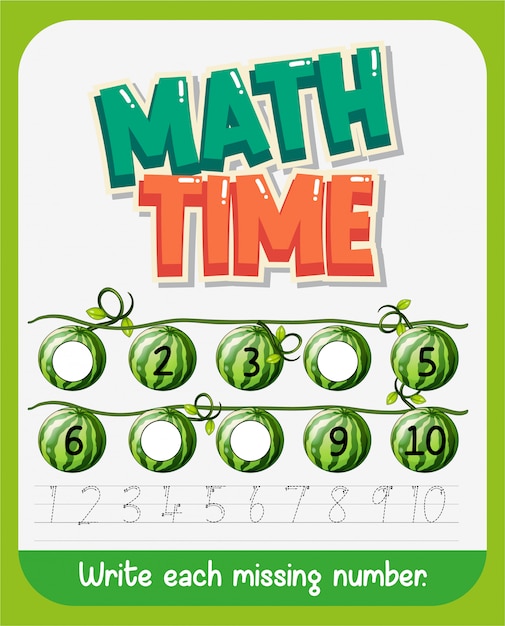Math Fun Facts

The word mathematics comes from the Greek word mathema, which means learning.
A minute is a mathematical unit of time consisting of 60 seconds.
The number zero was not recognized as a mathematical value until around the 7th century.
The Fibonacci sequence, where each number is the sum of the two preceding ones (e.g., 0, 1, 1, 2, 3, 5, 8…), can be found in various phenomena in nature, such as the arrangement of sunflower seeds.
The square root of 2 is an irrational number, meaning it cannot be expressed as a simple fraction or decimal. Its decimal representation goes on infinitely without repeating.
The number π (pi), which represents the ratio of a circle’s circumference to its diameter, is an irrational number. It has been calculated accurately to over 31 trillion decimal places.
The concept of zero was developed independently by different civilizations, including the ancient Mayans and Babylonians.
The Pythagorean theorem, a^2 + b^2 = c^2, is named after the Greek mathematician Pythagoras, who formulated it.
The concept of negative numbers was introduced during the Renaissance.
The number 1089 is fascinating because if you reverse its digits and subtract the smaller number from the larger one (i.e., 9801 – 1089), the result is always 89
The Golden Ratio (approximately 1.618) has been used throughout history in art, architecture, and even music composition.
The Riemann Hypothesis, one of the most famous unsolved problems in mathematics, proposes a connection between the distribution of prime numbers and the behavior of certain complex functions.
Math Fun Facts part 2
The concept of infinity is mind-boggling; there are different levels of infinity, with some infinities being larger than others.
The Four Color Theorem states that any map or flat surface can be colored using only four different colors, with no adjacent regions having the same color.
The Monty Hall Problem is a probability puzzle that challenges intuitive thinking. It involves choosing one of three doors, behind one of which is a desirable prize, and after an initial choice, one of the remaining doors, which does not hide the prize, is opened. The problem is whether to switch the initial choice or stick with it.
The number 2,147,483,647 is significant because it is the largest prime number that can be stored in a 32-bit signed integer on a computer.
The Birthday Problem demonstrates the surprising probability of two people sharing the same birthday in a group. With just 23 people, there is a 50% chance of two people having the same birthday.
The concept of infinity was first introduced by the Greek mathematician Zeno of Elea, who posed paradoxes related to motion and time.
A Möbius strip is a mathematical object that only has one side and one edge. If you were to travel along its surface, you would end up back where you started without ever crossing over to the other side.
The number 1729 is known as the Hardy-Ramanujan number and is considered a taxicab number because it can be expressed as the sum of two cubes in two different ways: 1^3 + 12^3 and 9^3 + 10^3.
The Mandelbrot set is a famous fractal that exhibits intricate and infinitely detailed patterns, even though it is defined by a simple mathematical equation.
The Butterfly Effect is a concept in chaos theory that suggests a small change in one part of a system can have significant effects on the whole system, similar to how a butterfly flapping its wings can potentially create a hurricane.
The number 153 is interesting because it is both the sum of the cubes of its digits (1^3 + 5^3 + 3^3) and the sum of the factorials of its digits (1! + 5! + 3!).
The Tower of Hanoi is a puzzle in which you need to move a stack of different-sized disks from one peg to another, based on certain rules. The minimum number of moves required for n disks is 2^n –
The Travelling Salesman Problem challenges finding the shortest possible route that visits a set of given locations and returns to the starting point. It is classified as an NP-hard problem, meaning there is no known efficient algorithm to solve it for larger instances.
The number 6174 is known as Kaprekar’s Constant because it was discovered by Indian mathematician D.R. Kaprekar. It is obtained by taking any four-digit number, arranging its digits in descending and ascending order, subtracting these two numbers, and repeating the process until 6174 is reached.
The Chaos Game is a computational experiment where a point is randomly placed inside an equilateral triangle, and at each iteration, it moves halfway towards a randomly chosen vertex. Surprisingly, after many iterations, the points distribute themselves in the form of the Sierpinski Triangle fractal.
The concept of the Golden Spiral is derived from the Golden Ratio and can be seen in nature, such as the shape of a seashell or the arrangement of leaves on a plant.
The Babylonian Method is an ancient algorithm used to iteratively find a more accurate approximation of the square root of a number by repeatedly averaging the guess with the original number divided by the guess.
The number 999,999 divided by 7 is interesting because it results in a repeating decimal sequence: 142,857.
The Bessel Functions are a family of mathematical functions that arise in various physical phenomena, such as heat conduction and electromagnetic waves. They were named after the German astronomer and mathematician Friedrich Bessel.
The Golden Ratio can be found in the proportions of the Parthenon in Athens, Greece, creating a sense of visual harmony and beauty.
The Pascal’s Triangle is a triangular arrangement of numbers, where each number is the sum of the two numbers directly above it. It has numerous applications in combinatorics, probability, and algebraic identities.
The Black-Scholes-Merton Model is a mathematical tool used to calculate the theoretical price of options, which revolutionized the field of quantitative finance and earned its creators the Nobel Prize in Economics.
The Monty Hall Problem gained widespread attention and sparked debates when it appeared as a question on the game show Let’s Make a Deal in the 1970s.
The concept of negative numbers was initially met with skepticism and resistance. It took several centuries for negative numbers to be widely accepted in mathematics.
The word algebra comes from the Arabic al-jabr, which means reunion of broken parts. The concept was popularized by the Persian mathematician Muhammad ibn Musa al-Khwarizmi.
The Game of Life is a cellular automaton created by mathematician John Conway. It consists of a grid of cells that evolve based on simple rules, leading to complex and unpredictable patterns.
The Sudoku puzzle, originally known as Number Place, was first published in the American magazine Dell Pencil Puzzles and Word Games in 1979. It quickly gained popularity worldwide as a challenging logic game.
The Halting Problem is a fundamental question in computer science that asks whether a program, given its input, will eventually halt (stop running) or run indefinitely.
The P versus NP Problem is one of the seven unsolved Millennium Prize Problems in mathematics, with a $1 million prize offered for a correct solution. It revolves around the question of whether it is easier to check if a solution exists (P) than to find the solution itself (NP).
The term googol was coined by mathematician Edward Kasner when trying to describe an extremely large number: 1 followed by 100 zeros. It inspired the naming of the company Google.
The Tutte Polynomial is a graph polynomial that encodes various properties of a graph, such as its chromatic polynomial, flow polynomial, and reliability polynomial. It was named after the Canadian mathematician William Tutte.
The Golden Spirals found in seashells, sunflowers, and spiral galaxies follow a logarithmic growth pattern, expanding while maintaining consistent proportions between successive segments.
The concept of imaginary numbers arose from the need to solve equations like x^2 + 1 = 0. These numbers, denoted by i, represent the square root of -1 and have found extensive use in fields such as engineering, physics, and electronic circuit analysis.

